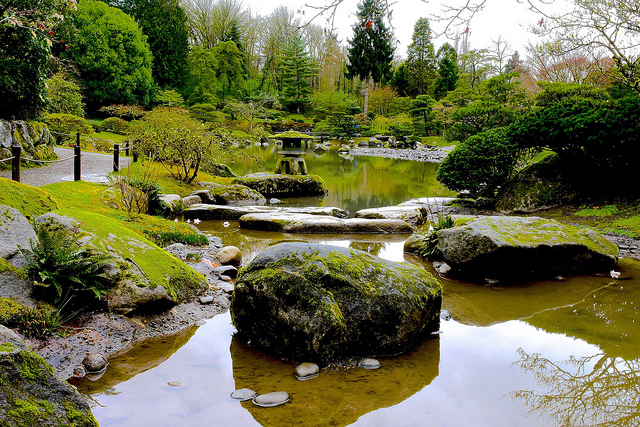Yohaku no bi: The Beauty of Empty Space

White spaces can be profoundly beautiful; full of mystery and promise, a reminder of the infinite potential that dwells within nature--and each of us.
Pine Trees
, 16th century, by Hasegawa Tōhaku, Tokyo National Museum.
Among my favorite paintings are a set of screens depicting Pine Trees, painted by Hasegawa Tōhaku about 1680. I discovered them during my study of Japanese arts and culture in college. The trees, delicately painted in shades of black ink, are surrounded by large swaths of unpainted white silk. Dreamy as the imagery is, the vision that Pine Trees offered seemed very real to me because I’d experienced many similar scenes as I walked the environs of San Francisco’s Japanese Tea Garden, near to where I lived for many years. Breezes from the Pacific gently moved the moist foggy mists, wrapping them around trees, creating ever shifting scenes that nudged me into contemplation.
Whether gazing at ink paintings or walking in the fog, I experienced the white spaces and mists as a profound beauty full of mystery and promise—appropriate for someone whose life as an adult was just beginning to flower. The emptiness of the space held a real beauty for me. It was the potential of my life.
The beauty of the extra white, the space left empty, is called yohaku no bi in Japanese. This is a concept borrowed from Chinese landscape ink wash paintings, where clouds, mist, sky, and water could be left unpainted. Their presence was suggested only by the carefully rendered edges of the surrounding landscape. This artistic strategy resonated with Taoism’s idea of qi (chi) – the formless energy from which the universe emanates.
In the 12th century Buddhist priest-artists brought the empty space concept and its expression back to Japan. In time, the use of empty space moved beyond painting (Sumi-e or Suibokuga) and became a key characteristic of Japanese art and design. It found its place in art forms such as calligraphy, garden design (especially dry gardens), and flower arranging.
Zen artists in particular appreciated the dynamic vitality created by empty areas. They saw in them a signifier of the Buddhist notion of emptiness as the ultimate reality. In this context emptiness doesn’t signify lack or something negative. Instead, it can be understood as an energetic field of infinite potentiality. This potentiality is what brings such energy to the use of empty space in Zen-inspired design, where empty areas carry the same weight as painted areas. In significant ways the empty space contributes a unique quality of structure, balance and definition in a composition.
The
yohaku,
empty space created by the shallow pond surrounding the large boulders, is essential for the stones to fully express their form and beauty. Photo: Aurora Santiago.
The beauty of empty space is experiential for both creators and viewers. For the artist/designer working with natural materials, that means paying extra attention to an element’s unique shape and how it was formed by nature—whether a stone for a dry landscape garden, or a flower to be placed in an ikebana arrangement. The designer has the responsibility for determining the interval or space (ma) between things. For it’s the relationship between the edges of one thing and another that defines the shape and composition of the empty space between. Too much space can weaken spatial relationships, too little creates a dull staccato. Yohaku is the result of the designer/artist creating a wonderful subtle spatial jazz.
For the beholder, the pregnant empty space of yohaku is calming as well as energizing. It gives our eyes a place to rest. But empty space also stimulates and holds our attention, engaging our imagination. Is that softly painted area a misty sky--or part of a lake? We love to “fill in” empty spaces. Watching our minds do so, we consciously encounter and participate in the field of potentiality: we come face to face with emptiness. That we can do so within the context of artistic beauty, carefully created with artistic principles in mind, is a splendid bonus.
Victoria Scarlett, Director of the Center for Sacred Art, will be teaching a 3-part class on “The Spirit of Japanese Beauty and Design” at the Japanese Garden starting Saturday, April 2nd. Advance registration is requested. Go to www.centerforsacredart.org for details.

